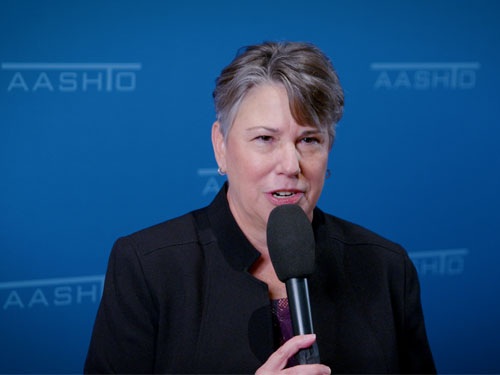The U.S. Department of the Treasury outlined specific transportation-related rules regarding the disbursement of $350 billion in Coronavirus State and Local Fiscal Recovery Funds – money provided through the American Rescue Plan or ARP legislation passed in early March – to state, local, territorial, and tribal governments.
[Above photo of Treasury Department headquarters by Matt Robinson]
The American Association of State Highway and Transportation Officials co-signed a March 28 letter with 35 other transportation organizations to Treasury Secretary Janet Yellen seeking “clear guidance and flexibility” regarding the use of ARP funds to support transportation infrastructure projects.
AASHTO’s transportation policy team noted that the fact sheet Treasury issued with its interim final rule – specifically on page 60 – conforms to that request.
“Sections 602(c)(1)(C) and 603(c)(1)(C) of the Act provide recipients with broad latitude to use the Fiscal Recovery Funds for the provision of government services,” Treasury said in its guidance.
“Government services can include, but are not limited to, maintenance or pay-go funded building of infrastructure, including roads; modernization of cybersecurity, including hardware, software, and protection of critical infrastructure; health services; environmental remediation; school or educational services; and the provision of police, fire, and other public safety services.”
AASHTO noted that, according to the guidance, recipients can compute the extent of the reduction in revenue by “comparing actual revenue to a counterfactual trend” representing what could have been expected to occur in the absence of the pandemic.
“For purposes of measuring revenue growth in the counterfactual trend, recipients may use a growth adjustment of either 4.1 percent per year or the recipient’s average annual revenue growth over the three full fiscal years prior to the COVID-19 public health emergency, whichever is higher,” Treasury noted in its guidance.
Treasury Secretary Yellen added in a statement that broad focus of this emergency funding is to enable “communities hit hard by COVID-19 will able to return to a semblance of normalcy.”
That also includes covering the costs of investments in water, sewer, and broadband infrastructure, making necessary investments to improve access to clean drinking water, support vital wastewater and stormwater infrastructure, and to expand access to broadband internet, she said.
 Top Stories
Top Stories
USDOT Makes $1.5B Worth of BUILD Grants Available
December 19, 2025 Top Stories
Top Stories

